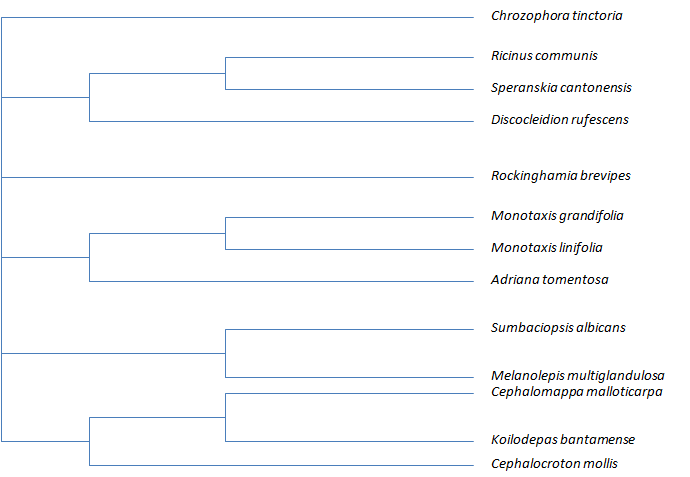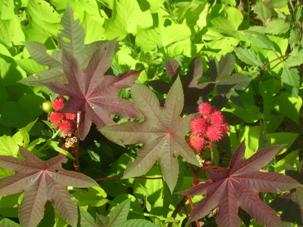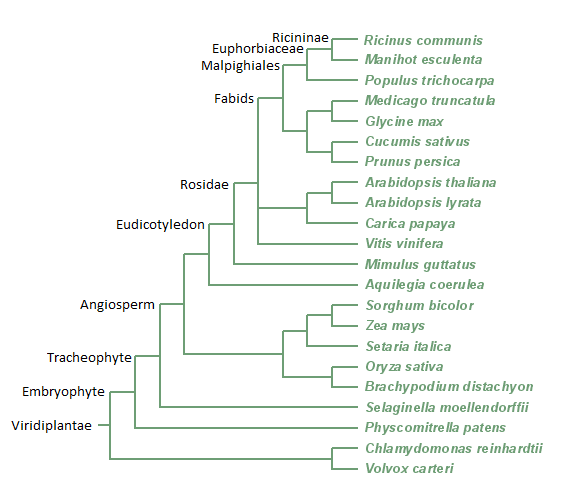Classification
So how is the castor bean related to all of the
other organisms? Good
question, the following page will show you exactly which Domain,
Kingdom, Phylum, Class, Order, Family, Genus and finally Species the
Castor bean is in and why! Don't forget
to check out the awesome phylogenetic trees towards the bottom of the
page! This will give you a great visual as to where the castor
bean sits in our vast world of organisms!! Interested in
learning about the classifications of organisms?
Check out Mr. Stephen T. Abedon’s webpage
here!!
Domain: Eukarya
The castor bean is defined as Eukarya because it has membrane bound organelles, it undergoes mitosis to reproduce, has complex cells, and has a nucleus that has a genetic code specific to the castor bean.
Kingdom: Plantae
The castor bean is in the kingdom plantae because it is multicellular, contains cellulose cells walls and undergoes photosynthesis. Another cool member of the plantae kingdom, the cabbage palm, can be found here.
Phylum: Angiospermae or Magnoliophyta
All members of this Phylum have flowering plants which produce seeds enclosed in fruit. A very interesting member of the Angiospermae, the Wild Ginger, can be found here. Angiospermae and Magnoliophyta are used interchangeably! If you want to learn more about this interesting phylum check out this webpage!!
Class: Magnoliopsida
All members of this Phylum are also called dicotlyedons. They have two cotyledons, netlike veins, pollen grains with three openings and floral organs in multiples of four or five. To see another Magnoliopsida, the potato, click here. Another Magnoliopsida you may be interested in is the mandarin orange, found here.
Order: Malpighiales
The Malpighiales Order is a monophyletic group whose species have polysymmetric flowers, 4-5 stamens and whose seeds are often fleshy and brightly colored with a thin and flat embryo.
Family: Euphorbiaceae
All members of the Euphorbiaceae are flowering plants which can be herbs, shrubs or trees. They all have alternate leaves with stipules. The stipules can be hairs, glands or spines. Most Euphorbiaceae are also known to have some sort of toxin. Want to know about more members of the Euphorbiaceae? Go here to find out more! You can also look below at this truncated phylogentic tree of the Euphorbiaceae family! The tree below was created based of the entire phylogenetic tree off the Euphorbiaceae found here!

Genus: Ricinus L.
The Genus Ricinus contains the various species of castor bean whose fruit is up to one inch long and covered in spines.
Species: Rininus communis L.
The species Rininus communis L. is the moderately tall, spiny fruit bearing castor bean plant.
The following phylogenetic tree shows how the castor bean (Ricinus communis) fits into the vast diversity of the Viridiplantae kingdom!
Craving more knowledge on the castor plant? Head on over to Habitat!
Back to Home
To
Multipleorganisms.net To
UW-Lacrosse Homepage



